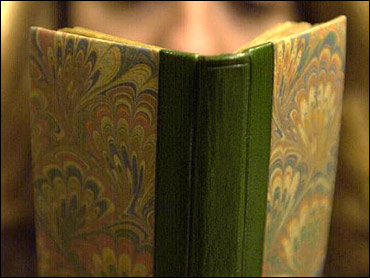Funny Innuendos Funny Innuendos About Nursery Rhymes

Sexual Innuendo And Nursery Rhymes
They seem innocent enough, but Jack and Jill may have become amorous as they climbed that hill for a pail of water.
And instead of a water bird, "Goosey, goosey gander" may refer to a woman of ill repute, says Chris Roberts, a social history graduate and librarian at the University of East London. Roberts has re-examined the origins of 24 popular nursery rhymes for a new book, "Heavy Words Thrown Lightly."
"The rhymes have all been well researched, but I have looked at them from a more modern, psychoanalytical perspective," he said in an interview with The Associated Press.
Roberts said his 96-page book, published by Foot and Mouth Publications, is intended to be "a lighthearted take" on the rhyming stories and nonsense jingles enjoyed by youngsters for generations.
It has long been known that many nursery rhymes allude to contemporary events - some of them distressing, even bloody. Peter and Iona Opie's "Oxford Dictionary of Nursery Rhymes," published in 1998, is among works that address origins and interpretations.
However, a study of published psychoanalytical texts has taken Roberts further than others in finding sexual meanings.
"Jack 'losing his crown' can be read to mean losing his virginity," said Roberts, who hit on his idea while researching historic walks in east London.
Roberts believes that the rhyme "Goosey, goosey gander, where do you wander? Upstairs and downstairs and in my lady's chamber" is an allusion to prostitutes - commonly known as geese in the 18th century. The rhyme also hints at the spread of venereal disease, which was known as "goose bumps" because of the swellings it caused.
Meanwhile, he says, "Oranges and Lemons," widely seen as a guide to the City of London, is a vulgar wedding song in which the line "here comes a candle to light you to bed" refers to the bride tempting her bridegroom; "here comes a chopper to chop off your head" suggests the woman losing her virginity, or "maidenhead."
The Opies do not allude to such readings. Yet they record the alternate second verse of "Jack and Jill" and agree with Roberts that the reference to "cockles" in "Mary, Mary Quite Contrary," refers to cuckolds in what Roberts believes is the promiscuous court of Mary, Queen of Scots, who ruled in the mid-1500s.
Like Roberts, the "Oxford Dictionary of Nursery Rhymes" authors record an alternate version of "See Saw, Marjorie Daw" that refers to Marjorie as a "filthy slut" who decided to "sell her bed and lay on muck."
"Some nursery rhymes were clearly adult rhymes that were sung to children because they were the only rhymes an adult knew," Roberts said. "Others were deliberately created as a simple way to tell children a story or give them information. Religion, sex, money and social issues are all common themes."
After a lifetime of studying old texts, the Opies concluded that most nursery rhymes are fragments of ballads or folk songs, ancient customs and rituals, street cries or mummers' plays. Others are based on proverbs or refrains of tunes sung by soldiers, they said.
They agree with Roberts that the rhymes "were not in the first place composed for children; in fact many are survivals of an adult code of joviality, and in their original wording were, by present standards, strikingly unsuitable for those of tender years."
Most experts believe the rhymes date from the early 17th century.
Increasing freedom of speech and communication later reduced the need for allegorical speech, but in the late 19th century under the Victorians, who viewed children as innocents, many of the original rhymes were reworked into collections for the young.
By Sue Leeman
Thanks for reading CBS NEWS.
Create your free account or log in
for more features.
Source: https://www.cbsnews.com/news/sexual-innuendo-and-nursery-rhymes/